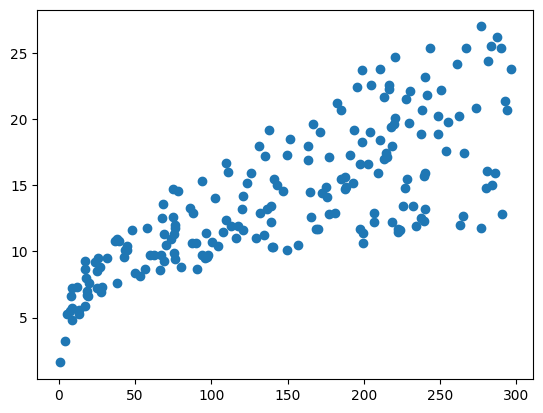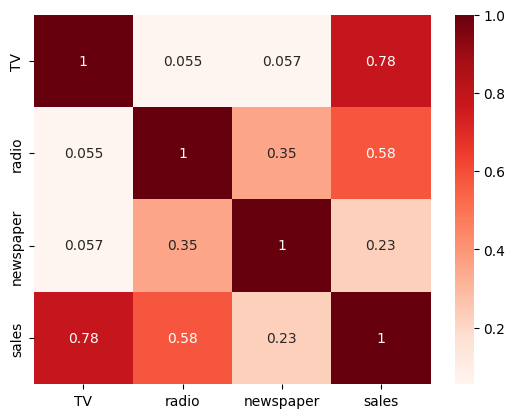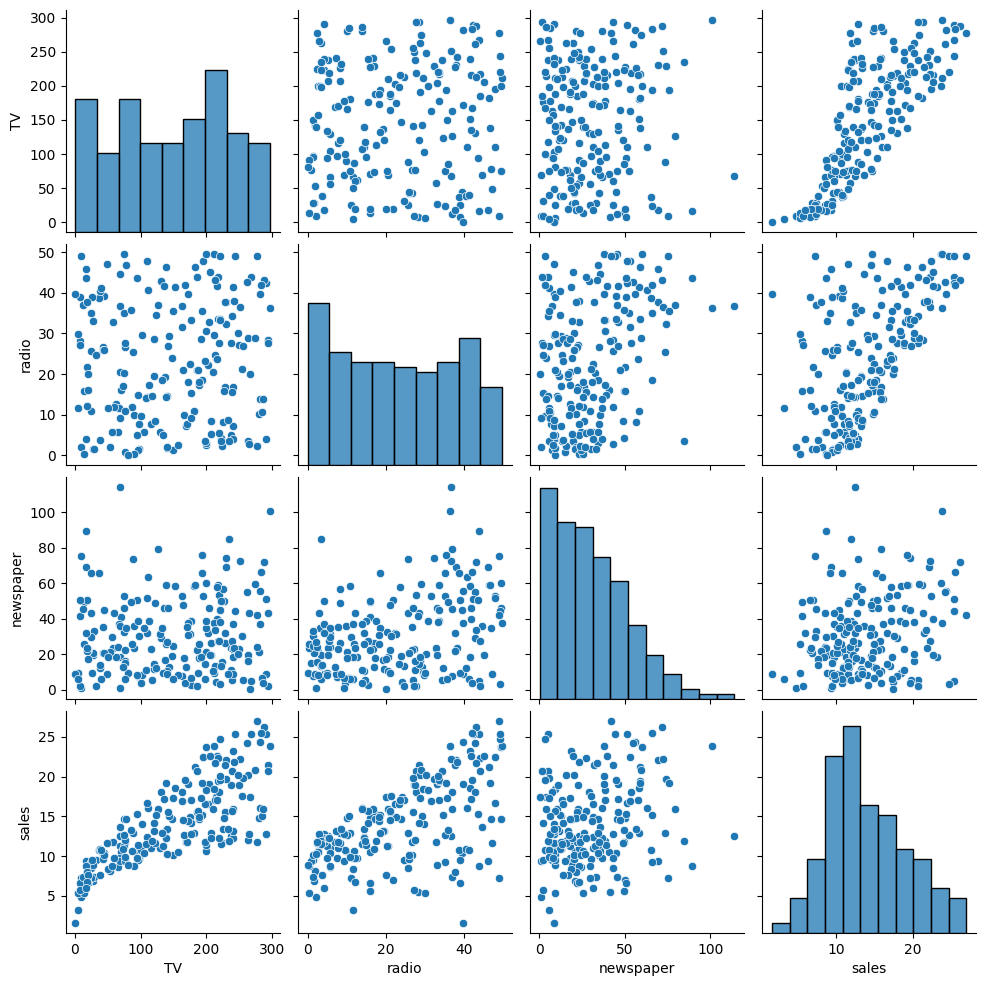Regression Part II#
OBJECTIVES
Use
sklearnto build multiple regression modelsUse
statsmodelsto build multiple regression modelsEvaluate models using
mean_squared_errorInterpret categorical coefficients
import matplotlib.pyplot as plt
import numpy as np
import pandas as pd
import seaborn as sns
from sklearn.linear_model import LinearRegression
from sklearn.metrics import mean_squared_error
Using Many Features#
The big idea with a regression model is its ability to learn parameters of linear equations.
tips = sns.load_dataset('tips')
X = tips['total_bill'].values.reshape(-1, 1)
y = tips['tip'].values.reshape(-1, 1)
#column of ones for intercept
intercept = np.ones(shape = X.shape)
#design matrix contains leading column of ones
design_matrix = np.concatenate((intercept, X), axis = 1)
design_matrix[:5]
array([[ 1. , 16.99],
[ 1. , 10.34],
[ 1. , 21.01],
[ 1. , 23.68],
[ 1. , 24.59]])
#linear algebra solution to least squares
np.linalg.inv(design_matrix.T@design_matrix)@design_matrix.T@y
array([[0.92026961],
[0.10502452]])
Advertising Data#
The goal here is to predict sales. We have spending on three different media types to help make such predictions. Here, we want to be selective about what features are used as inputs to the model.
ads = pd.read_csv('https://raw.githubusercontent.com/jfkoehler/nyu_bootcamp_fa25/main/data/ads.csv', index_col=0)
ads.head()
| TV | radio | newspaper | sales | |
|---|---|---|---|---|
| 1 | 230.1 | 37.8 | 69.2 | 22.1 |
| 2 | 44.5 | 39.3 | 45.1 | 10.4 |
| 3 | 17.2 | 45.9 | 69.3 | 9.3 |
| 4 | 151.5 | 41.3 | 58.5 | 18.5 |
| 5 | 180.8 | 10.8 | 58.4 | 12.9 |
#scatterplot
plt.scatter(ads['TV'], ads['sales']);

# heatmap
sns.heatmap(ads.corr(), annot = True, cmap = 'Reds');

# pairplot
sns.pairplot(ads);

Choose a single column as
Xto predict sales. Justify your choice – remember to makeX2D.
#declare X and y
X = ''
y = ''
Build a regression model to predict
salesusing yourXabove.
# instantiate and fit the model
model1 = ''
Interpret the slope of the model.
# examine slope, what does it mean?
Interpret the intercept of the model.
#intercept
Determine the
mean_squared_errorof the model.
from sklearn.metrics import mean_squared_error
# MSE
Create baseline predictions using the mean of
y. (Try theDummyRegressorhere).
from sklearn.dummy import DummyRegressor
Compute the
mean_squared_errorof your baseline predictions.
# MSE Baseline
Did your model perform better than the baseline?
What does the
PredictionErrorDisplayobject do? Can you demonstrate its use?
from sklearn.metrics import PredictionErrorDisplay
the .score method#
In addition to the mean_squared_error function, you are able to evaluate regression models using the objects .score method. This method evaluates in terms of \(r^2\). One way to understand this metric is as the ratio between the residual sum of squares and the total sum of squares. These are given by:
and
#model score
You can interpret this as the percent of variation in the data explained by the features according to your model.
Adding Features#
Now, we want to include a second feature as input to the model. Reexamine the plots and correlations above, what is a good second choice?
Choose two columns from the
adsdata, assign these asX.
sns.pairplot(ads, y_vars = 'sales')
<seaborn.axisgrid.PairGrid at 0x13b68f980>

# X2
X2 = ads[['']]
Build a regression model with two features to predict
sales.
# lr2 model
Evaluate the model using
mean_squared_error.
# yhat2
# MSE
Interpret the coefficients of the model
# make a dataframe here
Example II: California Housing Data#
cali = pd.read_csv('https://raw.githubusercontent.com/ageron/data/refs/heads/main/housing/housing.csv')
cali.head()
| longitude | latitude | housing_median_age | total_rooms | total_bedrooms | population | households | median_income | median_house_value | ocean_proximity | |
|---|---|---|---|---|---|---|---|---|---|---|
| 0 | -122.23 | 37.88 | 41.0 | 880.0 | 129.0 | 322.0 | 126.0 | 8.3252 | 452600.0 | NEAR BAY |
| 1 | -122.22 | 37.86 | 21.0 | 7099.0 | 1106.0 | 2401.0 | 1138.0 | 8.3014 | 358500.0 | NEAR BAY |
| 2 | -122.24 | 37.85 | 52.0 | 1467.0 | 190.0 | 496.0 | 177.0 | 7.2574 | 352100.0 | NEAR BAY |
| 3 | -122.25 | 37.85 | 52.0 | 1274.0 | 235.0 | 558.0 | 219.0 | 5.6431 | 341300.0 | NEAR BAY |
| 4 | -122.25 | 37.85 | 52.0 | 1627.0 | 280.0 | 565.0 | 259.0 | 3.8462 | 342200.0 | NEAR BAY |
# !pip install folium
import folium
from folium.plugins import HeatMap
m = folium.Map(cali[['latitude', 'longitude']].values[0])
HeatMap(cali[['latitude', 'longitude', 'median_house_value']].values, blur = 1, radius = 5).add_to(m);
m
#what features do you think matter?
#any new features we can manufacture?
#any features to encode?
#any missing data?

